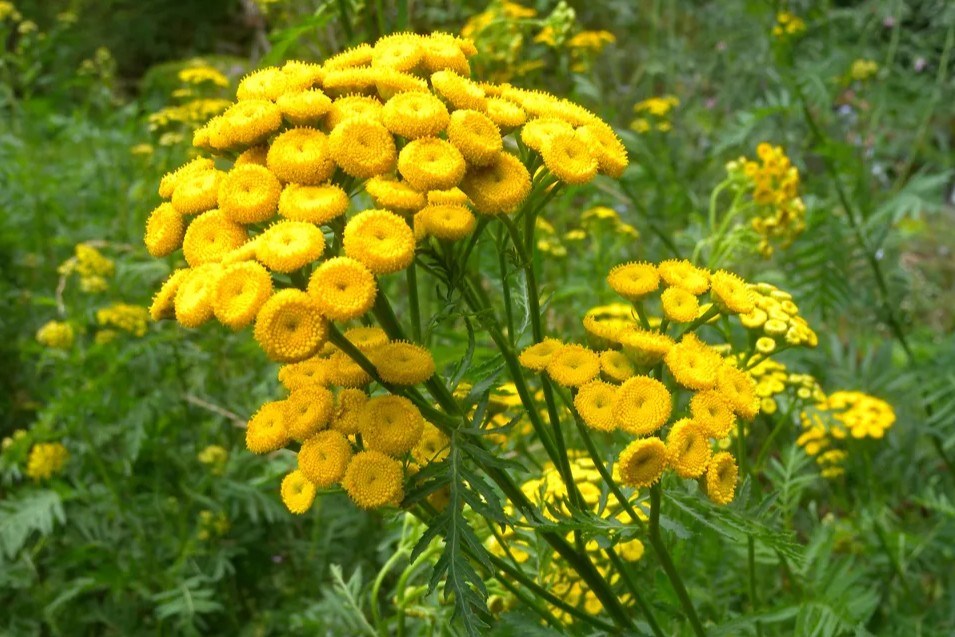When you think about environmental damage and its causes and effects, the first thing that comes to mind most likely isn’t plants.
However, the economic damage caused by invasive plant species every year in the North is incredible — with an estimated $139 million lost in BC from 2008 to 2020 and an estimated $50 million annually due to damages to agriculture alone in recent years.
The Northwest Invasive Plant Council (NWIPC) is a local non-profit organization looking to curb both the environmental and economic damage caused by invasive species across the North.
Kiara Mills, education and outreach assistant, spoke to The Citizen about what the organization has been doing in regard to invasive plant education in the area.
“This year, we wanted to make an effort to go out to some of the communities in our region,” said Mills. “Our region is quite large. It’s basically from the Alberta border all the way to the coast, and then all the way to the Yukon border, except for the Peace area. It’s been easy to get Prince George-focused, just because that’s where two out of three of our staff are from. We’ve been trying to take our education booth and go to farmers’ markets and events in other places in the region, so that’s one thing that we’re doing this summer.”
Besides education, the NWIPC also works with local contractors and land managers in problem areas across the North to reduce the influence of invasive plants.
The NWIPC currently lists the North’s most invasive and harmful plants that they categorize as tagged for early detection and rapid response.
This list is extensive — with 24 species listed in the Prince George area alone — some of which are listed below:
- Baby’s breath
- Bighead knapweed
- Blueweed
- Bohemian knotweed
- Chilean tarweed
- Common bugloss
- Field scabious
- Garden yellow loosestrife
- Greater knapweed
- Green foxtail
- Kochia
- Large yellow loosestrife
- Meadow knapweed
- Purple loosestrife
- Queen Anne’s lace/Wild carrot
- Russian knapweed
However, the early detection and rapid response list is just one of many. There are also high-priority and low-priority lists, which in total contain 51 different species just in the Prince George area alone.
Mills explained a few areas where these plants can thrive.
“They love the sides of roads and ditches and stuff, right? Because it’s really easy to be spread through vehicles moving through,” said Mills. “I’ve heard of some common tansy sites in Cottonwood Park, and then we have some management sites in Rainbow Park currently for mountain bluebell. They’re kind of everywhere!”
If left to their own devices, these species can ruin the development of native flora and fauna in the area — sometimes permanently.
“Disturbed sites are big spreaders,” said Mills. “Most of them do well in disturbed ground. Then they will just take over that area, and because they do so well and they reproduce so well — and a lot of them don’t need as many nutrients as native plants do — they will just outcompete the native species. The native species will not be able to grow in those areas, and this just reduces the biodiversity. So all of those native species are no longer available to grazers and browsers that would otherwise be coming into those areas and using them.”
Mills told The Citizen what locals can do if they see these plants growing in their gardens or out and about — and how to properly dispose of them.
“We have a hotline that you can call in and let us know that they’re around,” said Mills. “We also have information sheets and stuff available through the Invasive Species Council of BC on invasive plant management.
“If it’s on your property, some of them you can pull and then just dispose of them properly. They can’t be composted, because then they can just continue to spread. If people are going out removing them, if they are just put in trash bags and then sent to the landfill, that’s where they have the least chance of spreading.”
She added that cleaning equipment is also essential to reducing the spread of these plants, as hiking gear or mountain bikes are often known to track invasive plants back to cities and towns.
Mills also shared more ways locals can help out at NWIPC.
“Volunteers sign up for some stuff that would be available through upcoming events,” said Mills. “Then we also have what’s called the Community Invasive Plant Pull. People can get in contact with us to help organize, and then they just have to find a site for invasive plants, get people together, get insurance for it, and then if they’re based in Prince George, we can come out and help out — and maybe even have some support there with information and stuff. Then they can get a $250 honorarium for that, so that’s another program that we’ve been trying to get off the ground.”
To sign up for an invasive plant pull or to learn more, visit the NWIPC’s website at: https://nwipc.org/about-us/projects/community-weed-pulls



